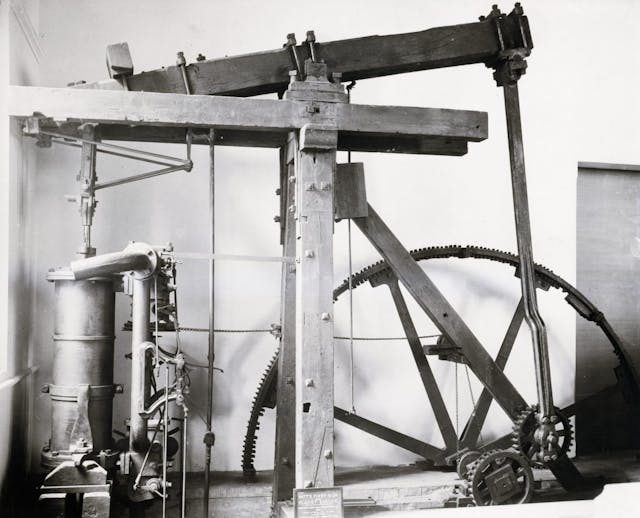Media | Articles
Leno: Precision machining built the world as we know it
I’m not trying to start a book club or anything, but I stumbled on a summer read that I just couldn’t put down. Before I say what it is, I should mention that one of my heroes is Henry M. Leland, the founder of Cadillac and Lincoln. Before Leland got into the car business, he ran a machining business that made components for sewing machines and guns. He was one of the first pioneers of standardized, interchangeable parts, which requires the ability to measure and machine things down to fractions of an inch and to do it repeatedly and reliably.
The Perfectionists: How Precision Engineers Created the Modern World is the story of how people developed that ability. Because if you’ve ever wondered how we went from chiseling rocks to making microchip transistors that are 13.5-billionths of a meter wide, then author Simon Winchester has a tale for you.
As you might imagine, his story starts with the people who made the first clocks, padlocks, and guns, though it goes back even further than that. In 1901, some sponge divers near the Greek island Antikythera found a shipwreck containing what turned out to be a mechanical computer more than 2000 years old. The Antikythera mechanism has at least 30 bronze gears in it for calculating the movement of the sun and moon and for predicting eclipses. At least, it did before it was dumped in the ocean for two millennia. The discovery of a 2000-year-old computer is a pretty good opener for a story; I couldn’t stop reading after that.
Winchester takes you through the development of precision-bore cannons in the 1700s by a guy named John “Iron-Mad” Wilkinson, followed by the adaptation of that technology by James Watt to steam engines. The invention of the lathe, followed by the invention of the slide rest on the lathe for fixing a cutting tool precisely in place, is what opened the door to the modern era, Winchester writes.

As is often the case, war was a great mother of invention. In the early 1800s, Britain was constantly scrapping with France, and the British navy needed pulley blocks in huge numbers. One ship could have 1400 pulley blocks in its rigging, but the craftsmen couldn’t keep up. It took him six years, but a machinist named Henry Maudslay built the first machine assembly line, and with it, Britain ruled the seas.
Marketplace
Buy and sell classics with confidence
The fascinating thing is that there was a real backlash, because every town had craftsmen who made things by hand. Gunsmiths took weeks to make a gun, then wiped their hands and made another. The idea that unskilled people working machines could produce precision products was insulting to the craft guilds.
This part of the book resonated with me because I’ve got a 1911 Christie that was the first fire engine in Los Angeles. When these were introduced, firemen would come in at night and smash them. At the time, fire departments were all-volunteer bucket brigades; if yours was the fastest bucket brigade in the city, you competed with other cities, and you might be able to throw a few hundred buckets an hour. Well, the Christie pumps a thousand gallons a minute. You can’t compete with that. It sounds crazy, but the bucket brigades were some of the first Luddites.
The book has a lot of big names in it: Thomas Jefferson watching a demonstration in France of the first guns to be made with interchangeable parts; Charles Rolls and Henry Royce perfecting automotive craftsmanship in England while Henry Ford perfected the rolling assembly line that required no craftsmanship but turned out a more reliable car; Frank Whittle, the inventor of the jet engine; and Gordon Moore of Moore’s law, which says that the number of transistors in an integrated circuit doubles every two years. A smartphone has something like 8 billion transistors. It doesn’t seem possible. How could you put 8 billion of anything in a box that fits in your hand?
To know the answer, you’ll have to put down your phone and pick up Simon Winchester’s book.









